-
Executive Summary
-
Scope of the Report
-
Market Definition
-
Scope of the Study
- Research Objectives
- Assumptions & Limitations
-
Market Structure
-
Market Research
-
Methodology
-
Research Process
-
Secondary Research
-
Primary
-
Research
-
Forecast Model
-
Market Landscape
-
Supply Chain Analysis
- Raw Material Suppliers
- Manufacturers/Producers
- Distributors/Retailers/Wholesalers/E-Commerce
- End Users
-
Porter’s Five Forces Analysis
- Threat
- Bargaining Power of Buyers
- Bargaining Power
- Threat of Substitutes
- Intensity of Competitive
-
of New Entrants
-
of Suppliers
-
Rivalry
-
Market Dynamics of Global Polymer Dispersion Market
-
Introduction
-
Drivers
-
Restraints
-
Opportunities
-
Challenges
-
Trends/Material
-
Global Polymer Dispersion Market, by Resin Type
-
Introduction
-
Polyurethane
- Market Estimates & Forecast,
- Market Estimates & Forecast, by Region, 2022-2030
- Market Estimates & Forecast, 2022-2030
- Market
-
Acrylic
-
Estimates & Forecast, by Region, 2022-2030
-
Styrene Butadiene
- Market Estimates & Forecast,
-
Market Estimates & Forecast, 2022-2030
-
by Region, 2022-2030
-
Vinyl
- Market Estimates & Forecast,
- Market Estimates & Forecast, by Region, 2022-2030
- Market Estimates & Forecast, 2022-2030
- Market Estimates
-
Others
-
& Forecast, by Region, 2022-2030
-
Global Polymer Dispersion Market, by
-
Application
-
Introduction
-
Carpets & Fabric
- Market
- Market Estimates & Forecast,
-
Estimates & Forecast, 2022-2030
-
by Region, 2022-2030
-
Adhesives & Sealants
- Market Estimates
- Market Estimates & Forecast, by Region,
-
& Forecast, 2022-2030
-
Decorative & Protective Coatings
- Market Estimates
- Market Estimates & Forecast, by Region,
-
& Forecast, 2022-2030
-
Printing Ink
- Market Estimates & Forecast, 2022-2030
- Market Estimates & Forecast, by Region, 2022-2030
-
Others
- Market Estimates & Forecast, 2022-2030
- Market Estimates &
-
Forecast, by Region, 2022-2030
-
Global Polymer Dispersion Market, by End-Use
-
Industry
-
Introduction
-
Building & Construction
- Market
- Market Estimates & Forecast,
-
Estimates & Forecast, 2022-2030
-
by Region, 2022-2030
-
Automotive
- Market Estimates & Forecast,
- Market Estimates & Forecast, by Region, 2022-2030
- Market Estimates & Forecast, 2022-2030
-
Consumer Goods
-
Market Estimates & Forecast, by Region, 2022-2030
-
Packaging
- Market Estimates & Forecast,
-
Market Estimates & Forecast, 2022-2030
-
by Region, 2022-2030
-
Paints
- Market Estimates & Forecast,
- Market Estimates & Forecast, by Region, 2022-2030
- Market Estimates & Forecast, 2022-2030
- Market Estimates
-
Others
-
& Forecast, by Region, 2022-2030
-
Global Polymer Dispersion Market, by
-
Region
-
Introduction
-
North America
- Market Estimates
- Market Estimates & Forecast, by Material,
- Market Estimates & Forecast, by Technology, 2022-2030
- Market Estimates & Forecast, by Application, 2022-2030
- US
- Canada
-
& Forecast, 2022-2030
-
& Forecast, by Material, 2022-2030
-
by Technology, 2022-2030
-
Estimates & Forecast, by Technology, 2022-2030
-
& Forecast, by Application, 2022-2030
-
Europe
- Market Estimates
- Market Estimates & Forecast, by Material,
- Market Estimates & Forecast, by Technology, 2022-2030
- Market Estimates & Forecast, by Application, 2022-2030
- Germany
- France
- Italy
- UK
-
& Forecast, 2022-2030
-
& Forecast, by Material, 2022-2030
-
by Technology, 2022-2030
-
Estimates & Forecast, by Technology, 2022-2030
-
& Forecast, by Application, 2022-2030
-
& Forecast, 2022-2030
-
Spain
-
Estimates & Forecast, by Material, 2022-2030
-
Forecast, by Technology, 2022-2030
-
by Application, 2022-2030
-
Market Estimates & Forecast, by Application, 2022-2030
-
& Forecast, by Material, 2022-2030
-
by Technology, 2022-2030
-
Russia
-
Market Estimates & Forecast, 2022-2030
-
Market Estimates
-
Market Estimates & Forecast,
-
Market Estimates & Forecast, by Application,
-
Poland
-
Market Estimates & Forecast, 2022-2030
-
Market Estimates & Forecast, by Material, 2022-2030
-
Market Estimates & Forecast, by Technology, 2022-2030
-
& Forecast, by Application, 2022-2030
-
Market Estimates & Forecast, 2022-2030
-
Forecast, by Material, 2022-2030
-
by Technology, 2022-2030
-
Estimates & Forecast, by Technology, 2022-2030
-
Forecast, by Application, 2022-2030
-
& Forecast, 2022-2030
-
India
-
Estimates & Forecast, by Material, 2022-2030
-
Forecast, by Technology, 2022-2030
-
by Application, 2022-2030
-
Market Estimates
-
Rest of Europe
-
Market Estimates &
-
Market Estimates & Forecast,
-
Market Estimates & Forecast, by Application,
-
Asia-Pacific
- Market Estimates & Forecast, 2022-2030
- Market Estimates & Forecast, by Material, 2022-2030
- Market
- Market Estimates &
- China
- Japan
-
Market Estimates & Forecast, by Application, 2022-2030
-
& New Zealand
-
Australia
-
Market Estimates & Forecast, 2022-2030
-
Market Estimates & Forecast, by Material, 2022-2030
-
& Forecast, by Technology, 2022-2030
-
by Application, 2022-2030
-
& Forecast, 2022-2030
-
East & Africa
-
Market Estimates
-
Market Estimates & Forecast,
-
Rest of Asia-Pacific
-
Market Estimates
-
Market Estimates & Forecast, by Material,
-
Market Estimates & Forecast, by Technology, 2022-2030
-
Market Estimates & Forecast, by Application, 2022-2030
-
Middle
- Market Estimates & Forecast, 2022-2030
-
Market Estimates & Forecast, by Material, 2022-2030
-
& Forecast, by Technology, 2022-2030
-
by Application, 2022-2030
-
Market Estimates
-
Market Estimates & Forecast,
-
GCC
-
Market Estimates & Forecast,
-
Market Estimates & Forecast, by Material, 2022-2030
-
Market Estimates & Forecast, by Technology, 2022-2030
-
Market Estimates & Forecast, by Application, 2022-2030
-
& Forecast, by Material, 2022-2030
-
by Technology, 2022-2030
-
Israel
-
Market Estimates & Forecast, 2022-2030
-
Market Estimates
-
Market Estimates & Forecast,
-
Market Estimates & Forecast, by Application,
-
North Africa
-
Market Estimates & Forecast,
-
Market Estimates & Forecast, by Material, 2022-2030
-
Market Estimates & Forecast, by Technology, 2022-2030
-
Market Estimates & Forecast, by Application, 2022-2030
-
& Forecast, by Material, 2022-2030
-
by Technology, 2022-2030
-
& Forecast, 2022-2030
-
America
-
Estimates & Forecast, by Material, 2022-2030
-
Forecast, by Technology, 2022-2030
-
Application, 2022-2030
-
Turkey
-
Market Estimates & Forecast, 2022-2030
-
Market Estimates
-
Market Estimates & Forecast,
-
Market Estimates & Forecast, by Application,
-
Rest of the Middle East & Africa
-
Market Estimates
-
Market Estimates & Forecast, by Material,
-
Market Estimates & Forecast, by Technology, 2022-2030
-
Market Estimates & Forecast, by Application, 2022-2030
-
Latin
- Market Estimates & Forecast, 2022-2030
- Market
- Market Estimates &
- Market Estimates & Forecast, by
- Brazil
-
Market Estimates & Forecast, by Application, 2022-2030
-
& Forecast, by Material, 2022-2030
-
by Technology, 2022-2030
-
Estimates & Forecast, by Technology, 2022-2030
-
& Forecast, by Application, 2022-2030
-
Market Estimates & Forecast, 2022-2030
-
by Material, 2022-2030
-
Mexico
-
Market Estimates & Forecast, 2022-2030
-
Market Estimates
-
Market Estimates & Forecast,
-
Market Estimates & Forecast, by Application,
-
Argentina
-
Market Estimates & Forecast, 2022-2030
-
Market Estimates & Forecast, by Material, 2022-2030
-
Market
-
Market Estimates
-
Rest of Latin America
-
Market Estimates & Forecast,
-
Market Estimates & Forecast, by Technology,
-
Market Estimates & Forecast, by Application, 2022-2030
-
Company Landscape
-
Introduction
-
Market Strategy
-
Key Development Analysis
-
(Expansions/Mergers & Acquisitions/Joint Ventures/New
-
Product Developments/Agreements/Investments)
-
Company Profiles
-
BASF SE
-
Segment Overview
-
Analysis
-
Developments
-
Overview
-
Akzo Nobel NV
-
Product/Business Segment Overview
-
Strategy
-
Kasei Corporation
-
Developments
-
Overview
-
Momentive Performance Materials Holdings LLC
-
Financial Updates
-
Ltd
-
Segment Overview
-
Analysis
-
Financial Updates
-
Segment Overview
-
SWOT Analysis
-
Updates
-
Company
-
Product/Business Segment Overview
-
Strategy
-
Corporation
-
Product/Business Segment Overview
-
Strategy
-
Maderera SA
-
Product/Business Segment Overview
-
Company Overview
-
Financial Updates
-
Product/Business
-
Strategy
-
Key Developments
-
SWOT
-
Arkema
- Company Overview
- Financial Updates
- Product/Business Segment Overview
- Strategy
- Key
- SWOT Analysis
-
DIC Corporation
- Company
- Financial Updates
- Product/Business Segment Overview
- Strategy
- Key Developments
- SWOT Analysis
- Company Overview
- Financial Updates
- Strategy
- Key Developments
- SWOT Analysis
-
Eastman Chemical Company
- Company Overview
- Financial Updates
- Product/Business Segment Overview
- Key Developments
- SWOT Analysis
-
Asahi
- Company Overview
- Financial Updates
- Product/Business Segment Overview
- Strategy
- Key
- SWOT Analysis
-
Clariant AG
- Company
- Financial Updates
- Product/Business Segment Overview
- Strategy
- Key Developments
- SWOT Analysis
- Company Overview
- Product/Business Segment Overview
- Strategy
- Key Developments
- SWOT Analysis
-
Nuplex Industries
- Company Overview
- Financial Updates
- Product/Business
- Strategy
- Key Developments
- SWOT
-
Omnova Solutions
- Company Overview
- Product/Business Segment Overview
- Strategy
- Key Developments
- SWOT Analysis
-
Wacker Chemie AG
- Company Overview
- Financial Updates
- Product/Business
- Strategy
- Key Developments
-
Trinseo SA
- Company Overview
- Financial
- Product/Business Segment Overview
- Strategy
- Key Developments
- SWOT Analysis
-
The Dow Chemicals
- Company Overview
- Financial Updates
- Strategy
- Key Developments
- SWOT Analysis
-
Asian Paints Ltd
- Company Overview
- Financial Updates
- Product/Business Segment Overview
- Key Developments
- SWOT Analysis
-
Celanese
- Company Overview
- Financial Updates
- Strategy
- Key Developments
- SWOT Analysis
-
Cytec Industries Inc.
- Company Overview
- Financial Updates
- Product/Business Segment Overview
- Key Developments
- SWOT Analysis
-
Financiera
- Company Overview
- Financial Updates
- Strategy
- Key Developments
- SWOT Analysis
-
Conclusion
-
LIST OF TABLES
-
Table
-
Global Polymer Dispersion Market, by Region, 2022-2030
-
North America:
-
Polymer Dispersion Market, by Country, 2022-2030
-
Europe: Polymer Dispersion
-
Market, by Country, 2022-2030
-
Asia-Pacific: Polymer Dispersion Market,
-
by Country, 2022-2030
-
Middle East & Africa: Polymer Dispersion
-
Market, by Country, 2022-2030
-
Latin America: Polymer Dispersion Market,
-
by Country, 2022-2030
-
Global Polymer Dispersion Material Market, by
-
Region, 2022-2030
-
North America: Polymer Dispersion Material Market,
-
by Country, 2022-2030
-
Europe: Polymer Dispersion Material Market, by
-
Country, 2022-2030
-
Table10 Asia-Pacific: Polymer Dispersion Material Market,
-
by Country, 2022-2030
-
Table11 Middle East & Africa: Polymer Dispersion
-
Material Market, by Country, 2022-2030
-
Table12 Latin America: Polymer Dispersion
-
Material Market, by Country, 2022-2030
-
Table13 Global Polymer Dispersion Technology
-
Market, by Region, 2022-2030
-
Table14 North America: Polymer Dispersion by Technology
-
Market, by Country, 2022-2030
-
Table15 Europe: Polymer Dispersion Technology
-
Market, by Country, 2022-2030
-
Table16 Asia-Pacific: Polymer Dispersion Technology
-
Market, by Country, 2022-2030
-
Table17 Middle East & Africa: Polymer Dispersion
-
Technology Market, by Country, 2022-2030
-
Table18 Latin America: Polymer Dispersion
-
Technology Market, by Country, 2022-2030
-
Table19 Global Polymer Dispersion
-
Application Market, by Region, 2022-2030
-
Table20 North America: Polymer Dispersion
-
Application Market, by Country, 2022-2030
-
Table21 Europe: Polymer Dispersion
-
Application Market, by Country, 2022-2030
-
Table22 Asia-Pacific: Polymer Dispersion
-
Application Market, by Country, 2022-2030
-
Table23 Middle East & Africa:
-
Polymer Dispersion Application Market, by Country, 2022-2030
-
Table24 Latin
-
America: Polymer Dispersion Application Market, by Country, 2022-2030
-
Table25
-
Global Material Market, by Region, 2022-2030
-
Table26 Global Technology Market,
-
by Region, 2022-2030
-
Table27 Global Application Market, by Region, 2022-2030
-
Table28 North America: Polymer Dispersion Market, by Country, 2022-2030
-
Table29
-
North America: Polymer Dispersion Market, by Material, 2022-2030
-
Table30 North
-
America: Polymer Dispersion Market, by Technology, 2022-2030
-
Table31 North
-
America: Polymer Dispersion Market, by Application, 2022-2030
-
Table32 Europe:
-
Polymer Dispersion Market, by Country, 2022-2030
-
Table33 Europe: Polymer Dispersion
-
Market, by Material, 2022-2030
-
Table34 Europe: Polymer Dispersion Market, by
-
Technology, 2022-2030
-
Table35 Europe: Polymer Dispersion Market, by Application,
-
Table36 Asia-Pacific: Polymer Dispersion Market, by Country, 2022-2030
-
Table37 Asia-Pacific: Polymer Dispersion Market, by Material, 2022-2030
-
Table38
-
Asia-Pacific: Polymer Dispersion Market, by Technology, 2022-2030
-
Table39 Asia-Pacific:
-
Polymer Dispersion Market, by Application, 2022-2030
-
Table40 Middle East &
-
Africa: Polymer Dispersion Market, by Country, 2022-2030
-
Table41 Middle East
-
& Africa: Polymer Dispersion Market, by Material, 2022-2030
-
Table42 Middle
-
East & Africa: Polymer Dispersion Market, by Technology, 2022-2030
-
Table43
-
Middle East & Africa: Polymer Dispersion Market, by Application, 2022-2030
-
Table44 Latin America: Polymer Dispersion Market, by Country, 2022-2030
-
Table45
-
Latin America: Polymer Dispersion Market, by Material, 2022-2030
-
Table46 Latin
-
America: Polymer Dispersion Market, by Technology, 2022-2030
-
Table47 Latin
-
America: Polymer Dispersion Market, by Application, 2022-2030
-
LIST OF
-
FIGURES
-
Global Polymer Dispersion Market Segmentation
-
FIGURE
-
Forecast Research Methodology
-
Five Forces Analysis of Global Polymer
-
Dispersion Market
-
Value Chain of Global Polymer Dispersion Market
-
Share of Global Polymer Dispersion Market in 2020, by Country (%)
-
Global Polymer Dispersion Market, 2022-2030
-
Global Polymer
-
Dispersion Market Size, by Material, 2020
-
Share of Global Polymer
-
Dispersion Market, by Material, 2022-2030
-
Global Polymer Dispersion
-
Market Size, by Technology, 2020
-
Share of Global Polymer Dispersion
-
Market, by Technology, 2022-2030
-
Global Polymer Dispersion Market
-
Size, by Application, 2020
-
Share of Global Polymer Dispersion Market,
-
by Application, 2022-2030

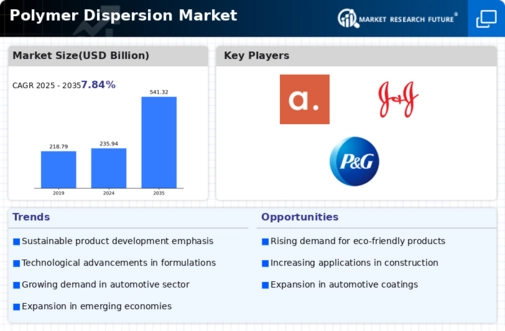

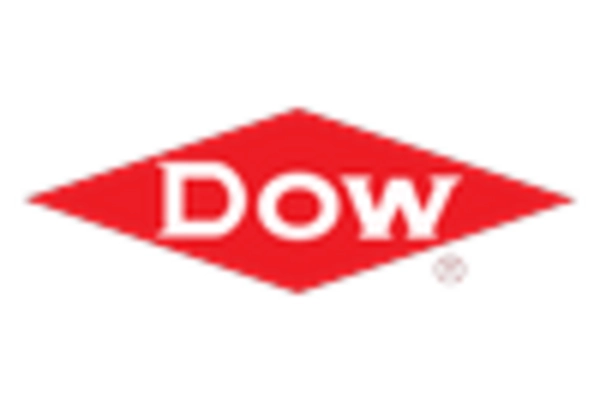
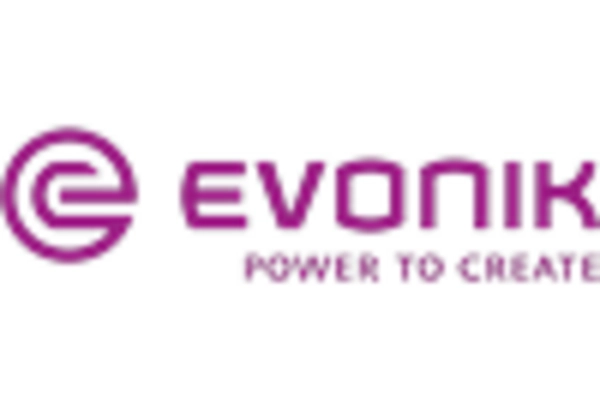
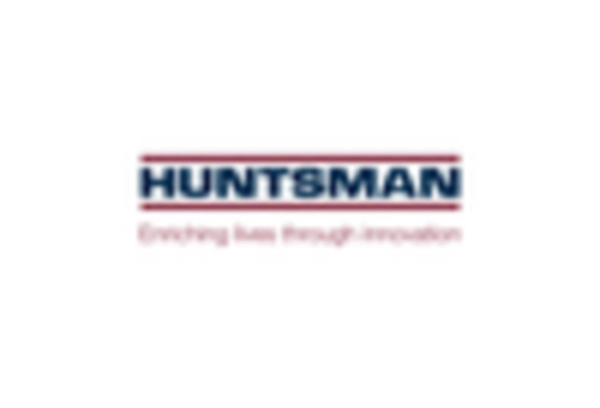
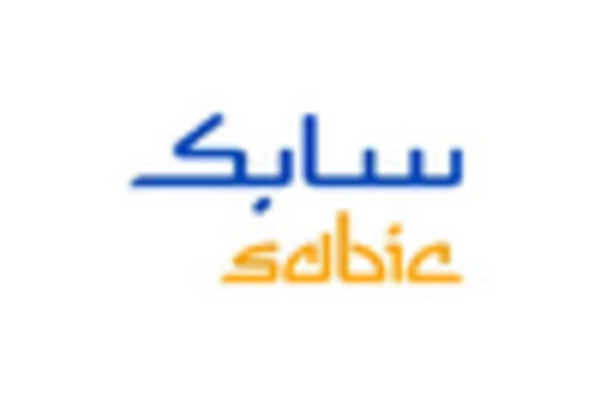
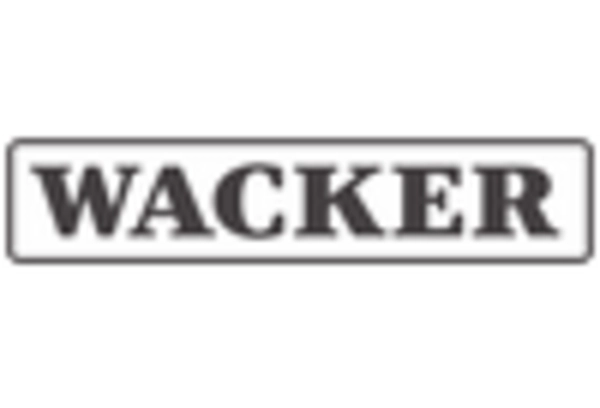









Leave a Comment